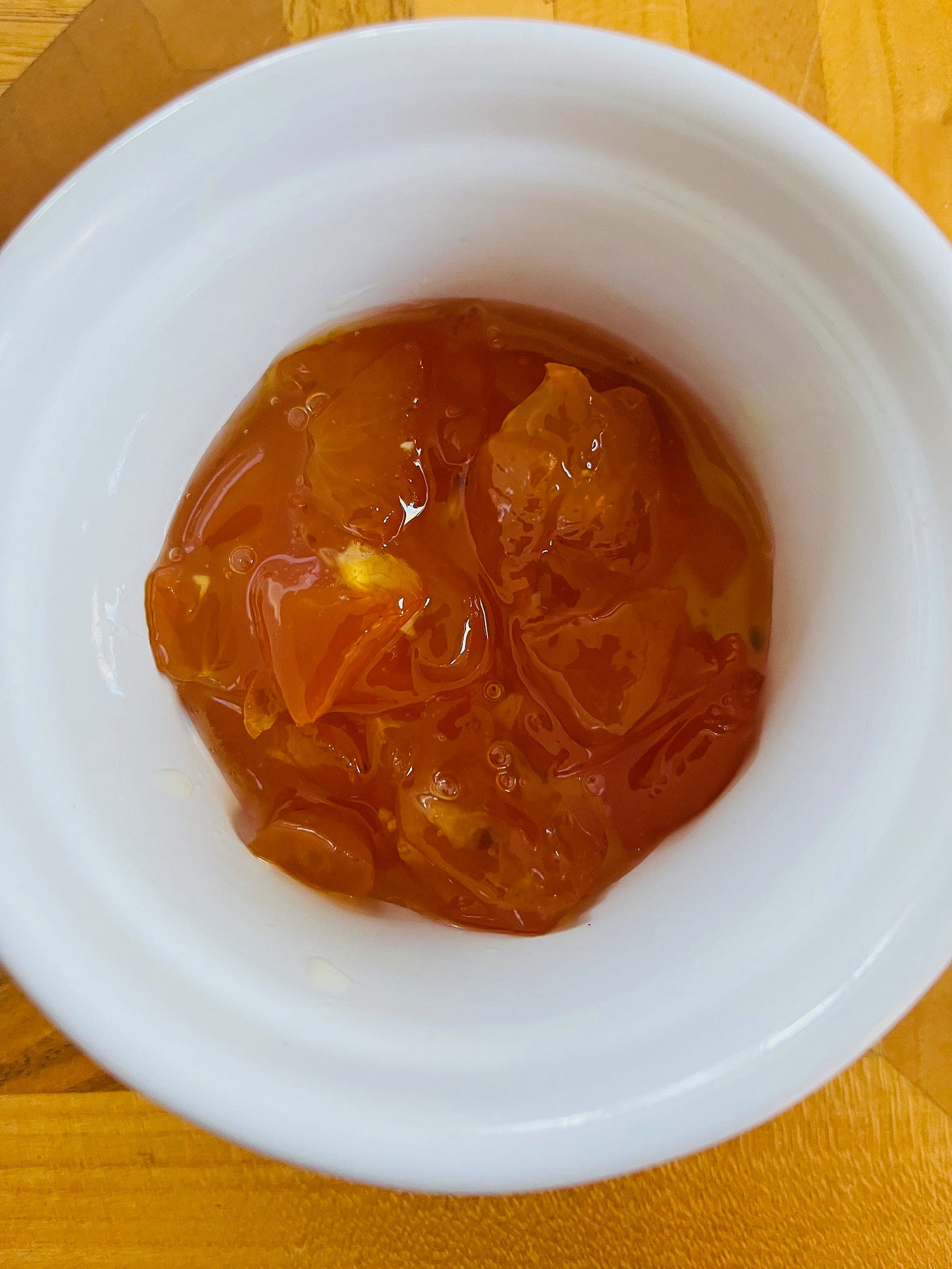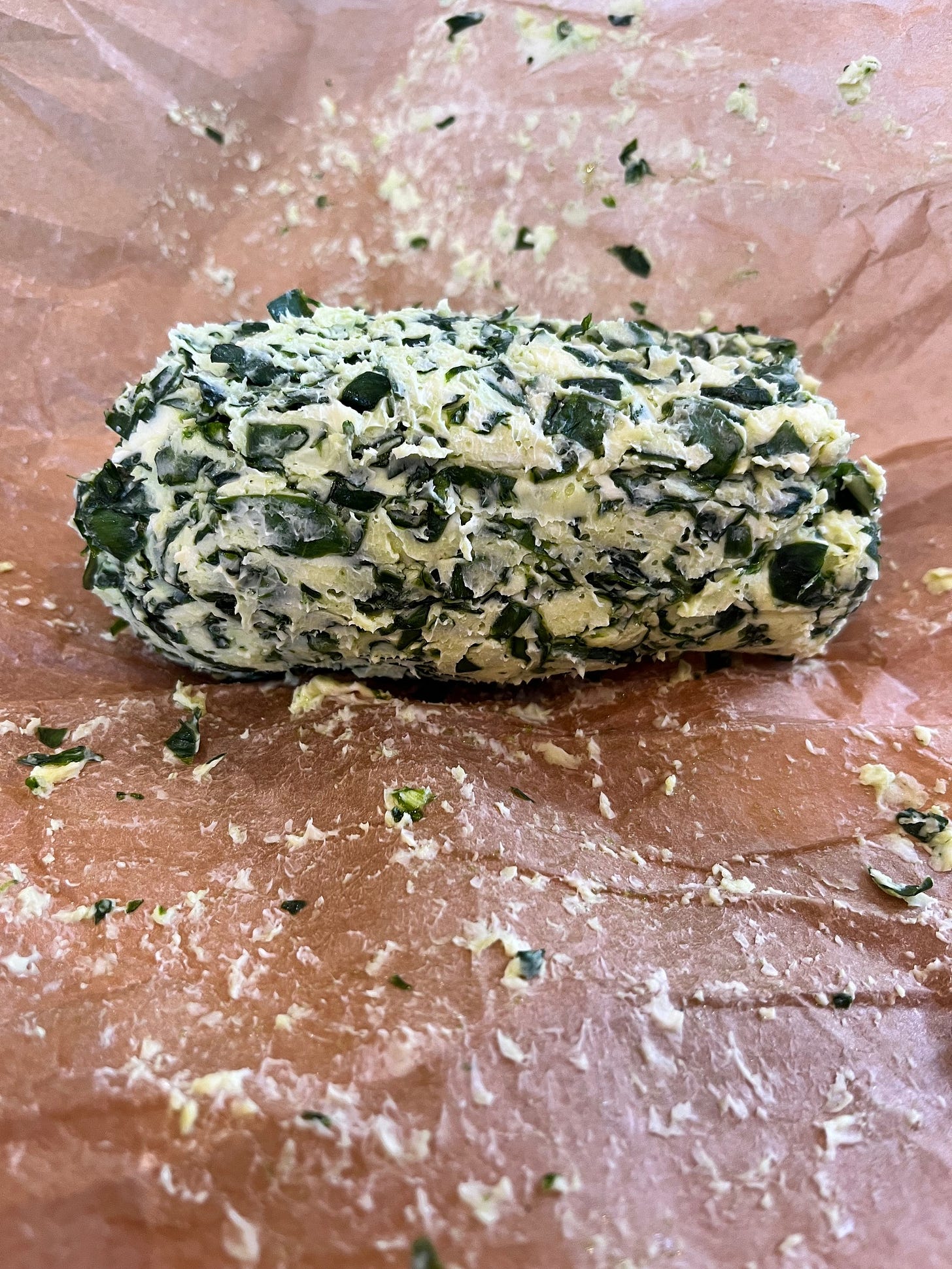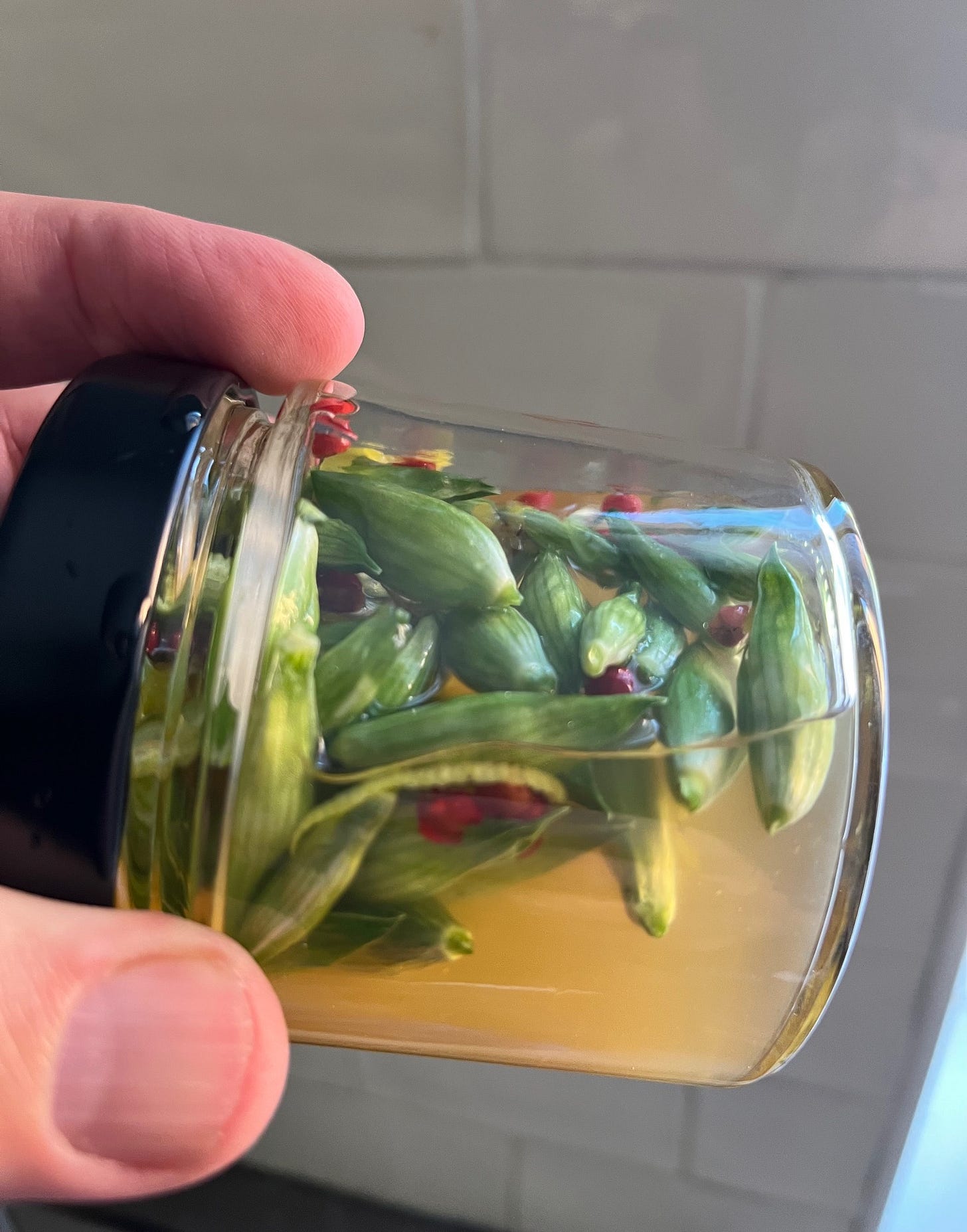Hello Lemonistas,
Welcome to the latest edition of The Lemon Grove newsletter.
For the past few weeks, I have been putting more energy than usual into cooking, gardening, and spending more time outdoors. This has many advantages, such as focusing on mindfulness, building physical strength, and being present in the present. This past weekend, I was all about wild garlic: foraging for it, cleaning the leaves, and using them in recipes.
Another great mindful trick is to tidy and check the dates of our spices. In this case, I decanted a set of spices and my newly purchased Masala Dabba storage case. Recently, I spent a very enjoyable few hours with two fellow Indian food enthusiasts at Ren’s Pantry cook school in north London. Our teacher was Ren Patel, ‘The Spice Queen’. I’d met Ren at a Guild of Fine Food judging event, and she kindly invited me along to up my curry game. While there, I recorded a few minutes of the class. Listen and read all about it in The Lemon Grove’s April 17 newsletter.
CITRUS 101: Kumquats
Here is the latest edition - bloopers and all - of The Lemon Grove’s Citrus 101 guide to the wonderful world of lemons, oranges, yuzu and for this edition, Kumquats.
RECIPE: Candied Kumquats
Timing
Prep: 10 mins
Cook: 30 mins
Total: 40 mins
Ingredients
500 gm (approx), roughly chopped kumquats
225 ml water, fresh
400 gm caster sugar
Method
Prep the kumquats: Wash the fruit and roughly chop. Smaller ones can be left intact. Remove obvious seeds, but as they are edible, it’s not a job for perfectionists, so feel free to leave them in. Surgically remove as much pith as you can for cosmetic reasons, as it doesn’t add bitterness to the final candied pieces.
Combine the water and sugar and bring to a boil over high heat. Reduce the heat and simmer for 5 minutes. Gently add the chopped fruit and simmer for another 10 minutes.
Drain the mixture over a bowl (keeping the syrup). Further heat the syrup and reduce it to a syrupy consistency, then simmer for a further five minutes to reduce the volume. Reintroduce the fruit to the syrup.
Pour the kumquats and syrup into a clean jar.
Use immediately or place in a clean jar and refrigerate.
They’ll last for around two weeks if chilled in the fridge.
Kumquats, tart and sweet
Candied kumquats can be used as a sweet and tart garnish, baking component, or condiment. They add a unique flavour to desserts, pastries, salads, and even savoury dishes such as poultry or duck.
Kumquats can be used in both sweet and savoury dishes. Their seeds are high in pectin, making them perfect for marmalades, jams, and chutneys.
Fresh kumquats are delicious when eaten raw. Their skin is edible and adds a tartness to the soft, sweet flesh.
Zest and/or finely chop and add to salads. Slice and finely chop and pop into cocktails and mocktails for a sweet zestiness.
It can be used to make marmalade, spread on toast, flavour yogurt, or glaze roasted meats or vegetables.
For something with a bit of kick, try salsa. Roughly chop kumquats and combine them with diced tomatoes, onions, coriander, jalapeños, and a squeeze of lime juice. Serve with grilled fish or chicken.
Add candied fruit to fruit tarts, pavlovas or panna cottas.
Kumquats can add brightness and acidity to braises.
Wild garlic: mild and aromatic
Wild garlic is this season’s must-have foraged plant. Found growing in abundance in damp woodlands, often following the course of a stream or river.
Wandering through a sun-dappled woodland beside a gently flowing river, the air is rich with the unmistakable scent of wild garlic. The soft rustle of leaves of the woodland floor underfoot breaks the early morning silence as I tread carefully on the lush green carpet of wild garlic. Occasionally, their white star-shaped flowers peek through broad, glossy leaves. It’s a simple, grounding pleasure—gathering handfuls of the vibrant greenery, and being immersed in a rich aroma of woodland dampness and a gentle garlic smell. A few swans glide past, and a flock of Canada Geese are heard squabbling and gossiping. The early morning sunlight filters through the branches, offering patches of warm air and intensifying the greenness around me. There’s a sense of timelessness here, a quiet joy in harvesting something fresh and wild. Each handful of wild garlic feels like a gift from nature—a moment of connection and nourishment.
A short drive home and I’m back in the kitchen. Carefully removing the leaves and flower buds from the canvas tote bag (they would sweat in a plastic bag), I first head to the garden where the leaves are gently shaken to loosen the grip of any travelling insects that had hitched a ride before plunging them into iced water to cleanse and refresh. Each leaf and flower bud is checked, wiped clean, and placed in a colander to drain. Perhaps gently pat it with a dry tea towel, and they’re ready for use.
Butter, wild garlic leaves
250gm, unsalted butter, softened
1 tsp, sea salt flakes
50gm, roughly chopped wild garlic leaves
Combine all ingredients in a bowl using a fork. Using baking or greaseproof paper, shape the mixture into a rough cylinder.
Slice into rounds to melt into pasta or rice. Serve with grilled asparagus, steak, chicken, or pan-fried salmon fillets.
Freeze for around a month, either as a cylinder or 1 cm thick slices.
Pickled, wild garlic flower buds
Wild garlic flower buds (enough to fill your jar)
150ml vinegar - I used a raw and unpasteurized apple cider vinegar
100ml cold water
50gm granulated sugar
1 tsp lemon zest (or … pink, black or white peppercorns, mustard seeds, fennel, chilli, ginger, coriander seeds, cloves, juniper, bay leaf or lemon zest.)
1 tsp sea salt.
You’ll need:
Glass jar, suitably sterilised
Combine the vinegar, water, sugar, and salt in a small saucepan and heat until the sugar and salt dissolve.
Add your spices and flavourings (I used half a teaspoon of lemon zest and a similar volume of pink peppercorns) and leave the liquid to cool.
Pack the wild garlic buds tightly into your jar, leaving about 1 cm at the top, and then cover with the cooled pickling liquid.
Firm the pods with a spoon. Add more liquid if needed.
How to use: sprinkle buds across pizzas or pasta, on green salads to add pops of flavour. Snack on them alongside olives,
While they are best eaten within a couple of weeks, they'll last for a few months if kept in the fridge.
Other uses of wild garlic
Risotto: At the end of the cooking time, stir in a handful of chopped garlic leaves to add a fresh, mellow garlic note to this rice dish. This preserves its bright green colouring.
Pesto: Blitz your leaves with olive oil, toasted pine nuts or hazelnuts, grated hard cheese (such as Parmesan, Pecorino, or even Manchego), and a pinch of salt.
Salt: Using a blender, briefly blitz 100g of sea salt with all the chopped wild garlic leaves. Fold this paste through the remaining salt until fully combined. Spread the mixture on a baking tray and leave somewhere to dry overnight, or use a dehydrator if you have one (see instructions for timing). Decant into a sterilised jar. Store in a cool, dry place.
READ
Like many of us, I’m sure, I’m always trying to learn a language, or perhaps two. At the moment it’s French and Spanish. So I was intrigued to buy these two French-language pamphlets from Paris-based publisher Les Éditions de l’Épure.
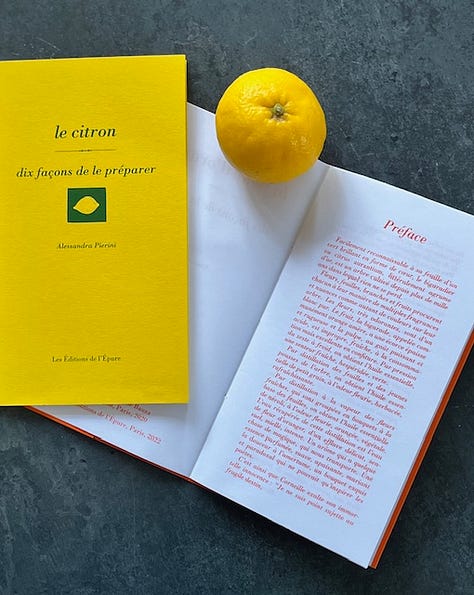
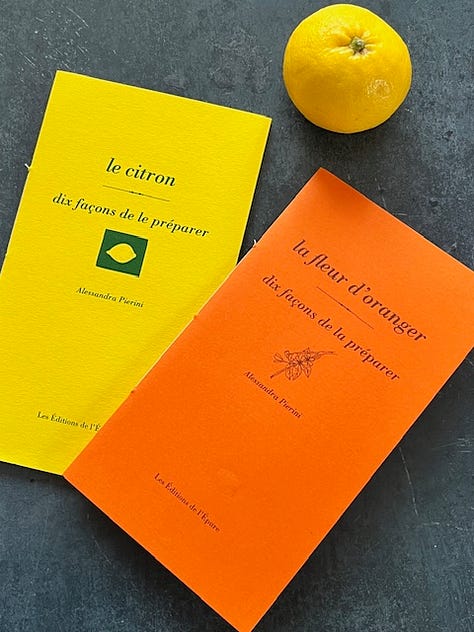
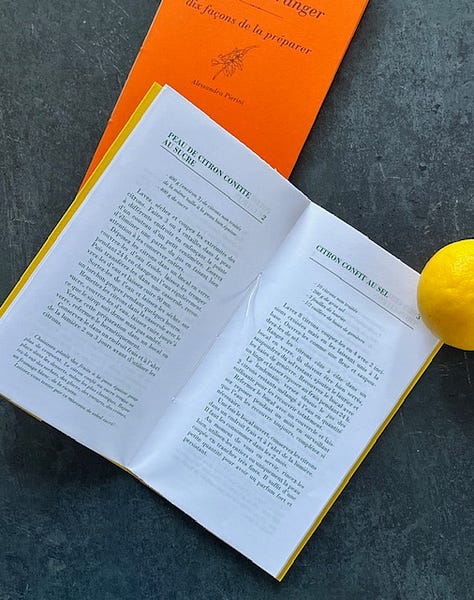
They are beautifully produced, with cloth stitching, a coloured font, a short introduction, and ten recipes for using lemons and orange blossoms.
For more information, click here and follow them on Instagram @editionsepure
WATCH
French director Louise Courvoisier’s debut feature film is a personal and reflective look at the life and loves of people living in the Jura mountains of France, dedicated to making Comté cheese.
Holy Cow, follows 18-year-old Totone as he takes over his father’s dairy farm and learns the arduous process of making this special cheese. He does this while navigating his first love. Watch the trailer on YouTube here.
And finally … Villa Farnesina
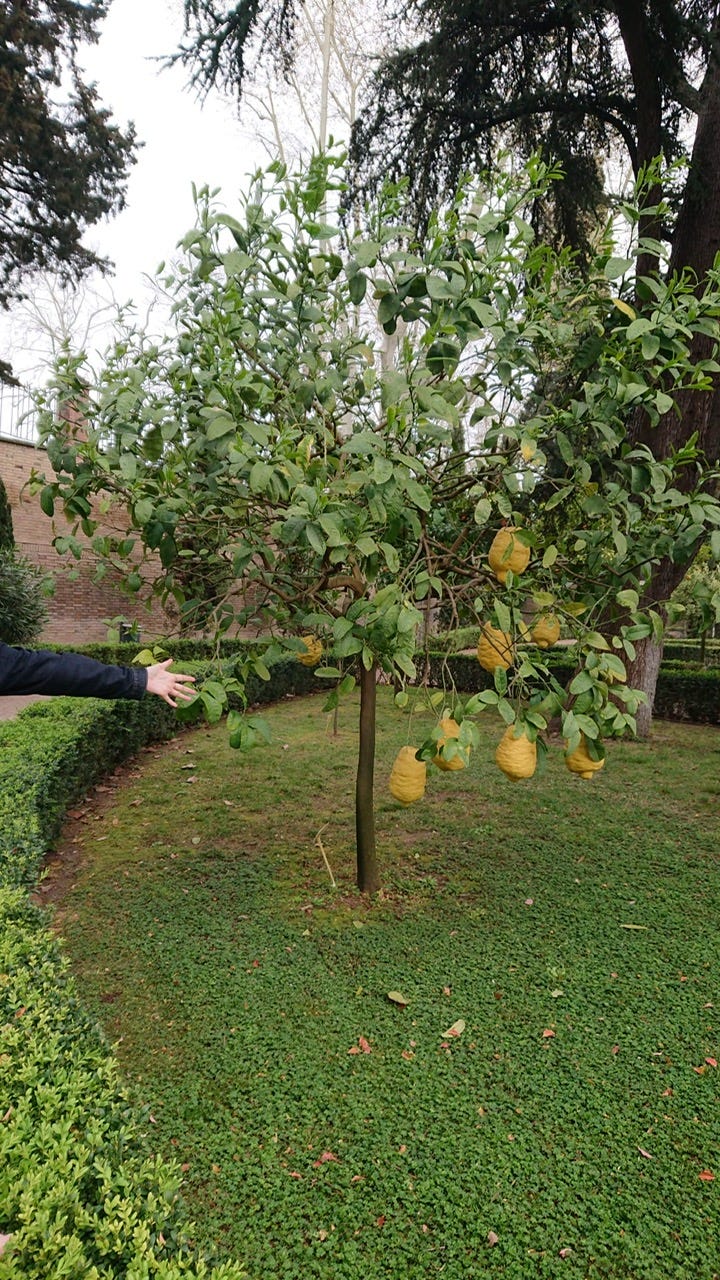
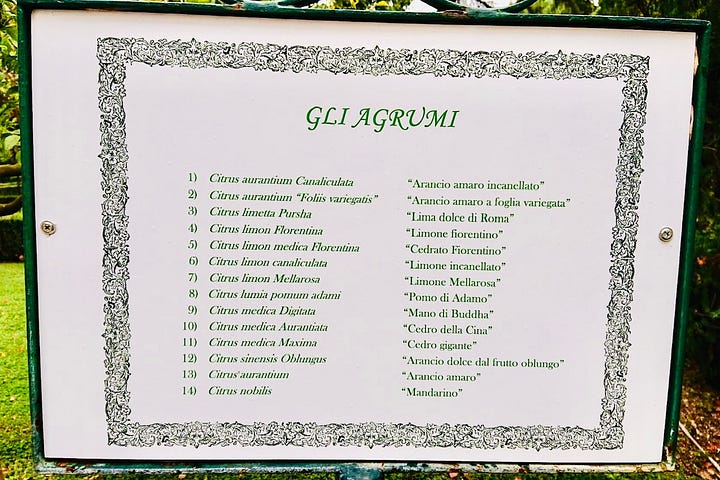
Thanks to all you Lemonistas who share with me your shopping and holiday snaps of lemons, oranges and other citrus fruits spotted in markets, in pots outside Airbnb apartments or in the gardens of Roman palazzo. Thanks here go to Ruth who noticed this fabulous tree of Cedros in the lush gardens of Villa Farnesina in Rome. The sign lists other citrus fruits found in the gardens, while to the left of the tree you’ll spot Ruth's adult daughter’s hand, for scale.
Villa Farnesina
The Lemon Grove's Substack newsletter
Give the gift of a 'The Lemon Grove' Substack newsletter to a friend, family member or yourself! Organise your gift through this link below … Thank you.
If you enjoyed this post, please click on the little ❤️ below ⬇️.
Thanks for reading and please do leave a comment, by pressing the button below!
Bruce McMichael
Writer, Podcaster, Event Host & Cook, Lemonista
Email: hello@thelemongrove.net
Facebook: LemonGroveSocial
Instagram: LemonGrovePics




